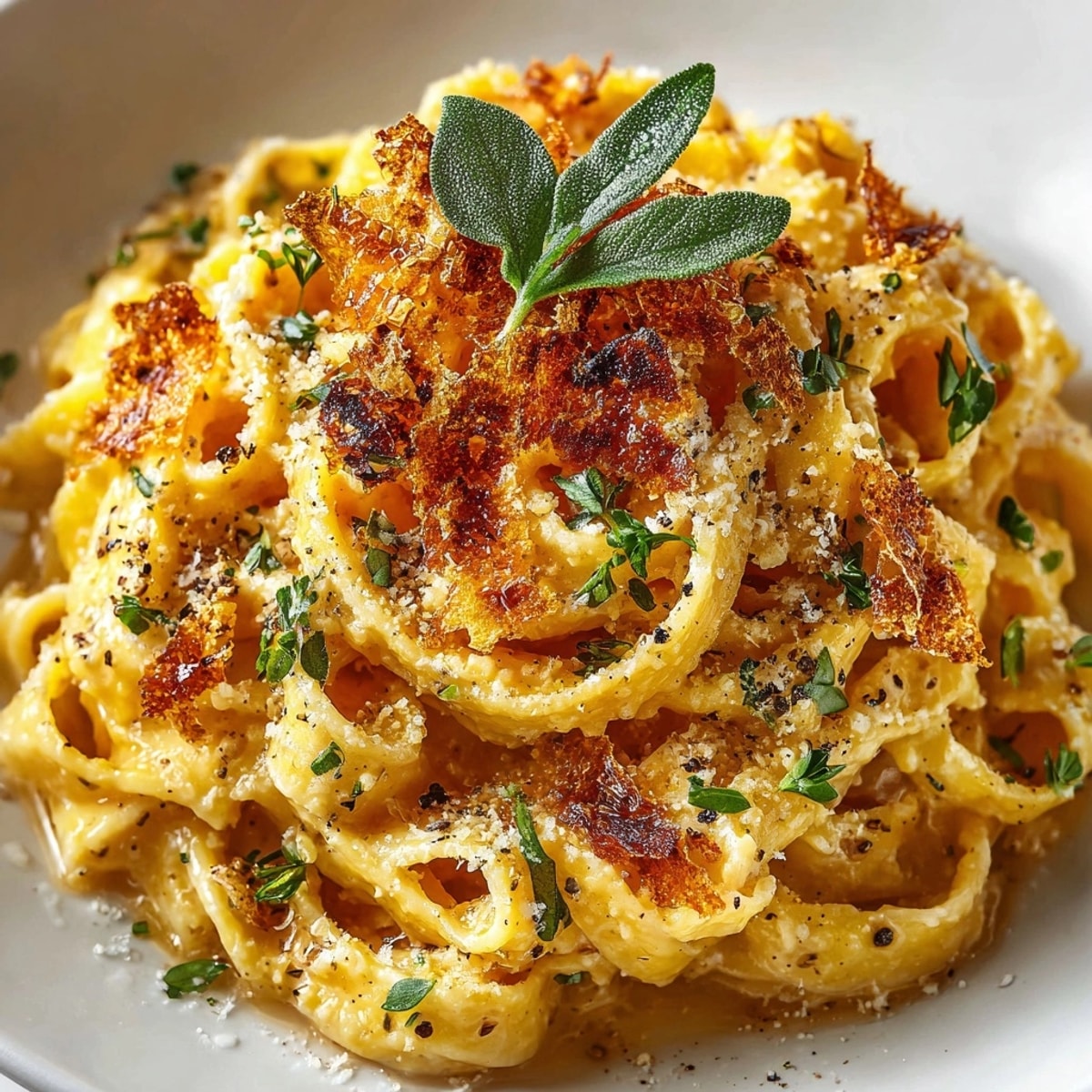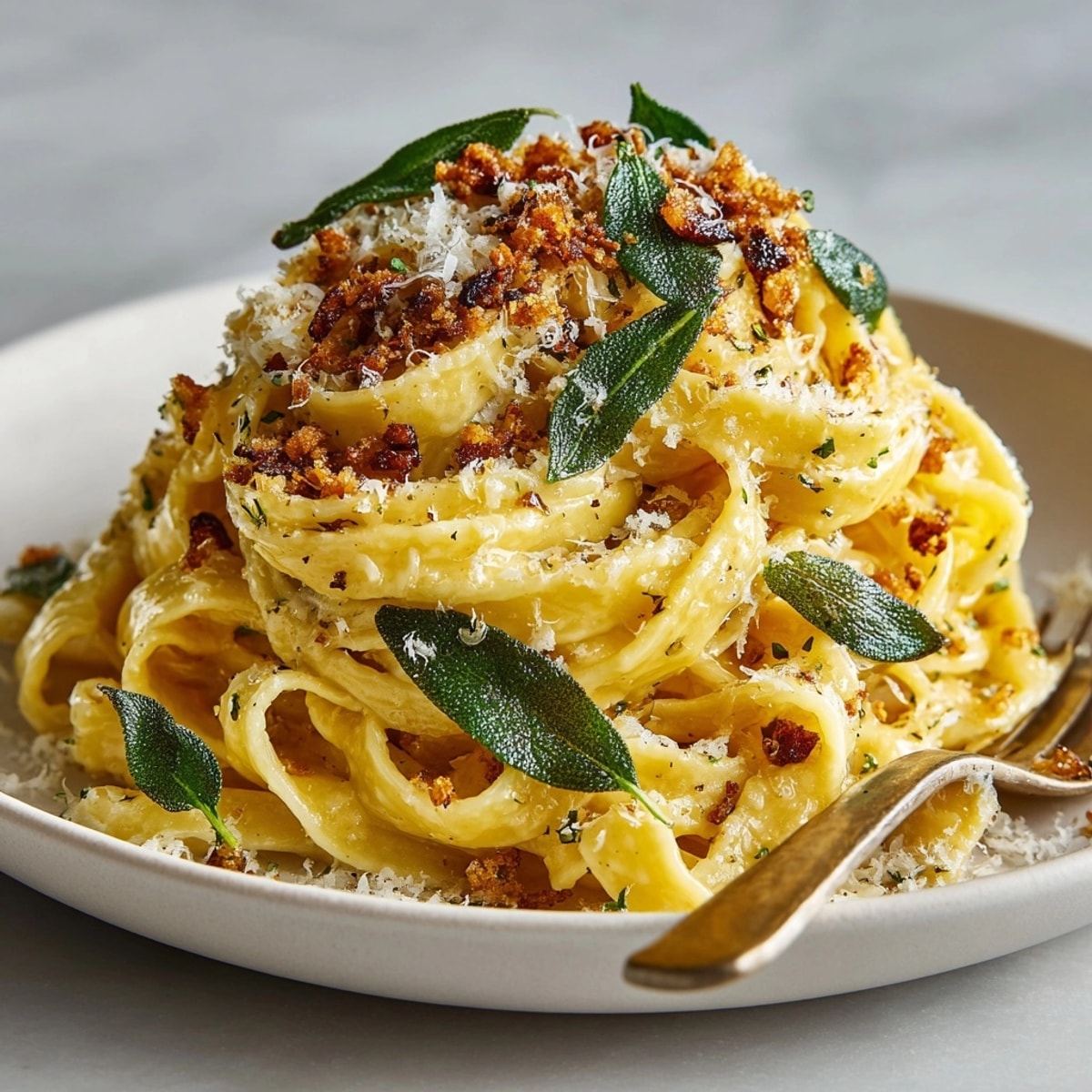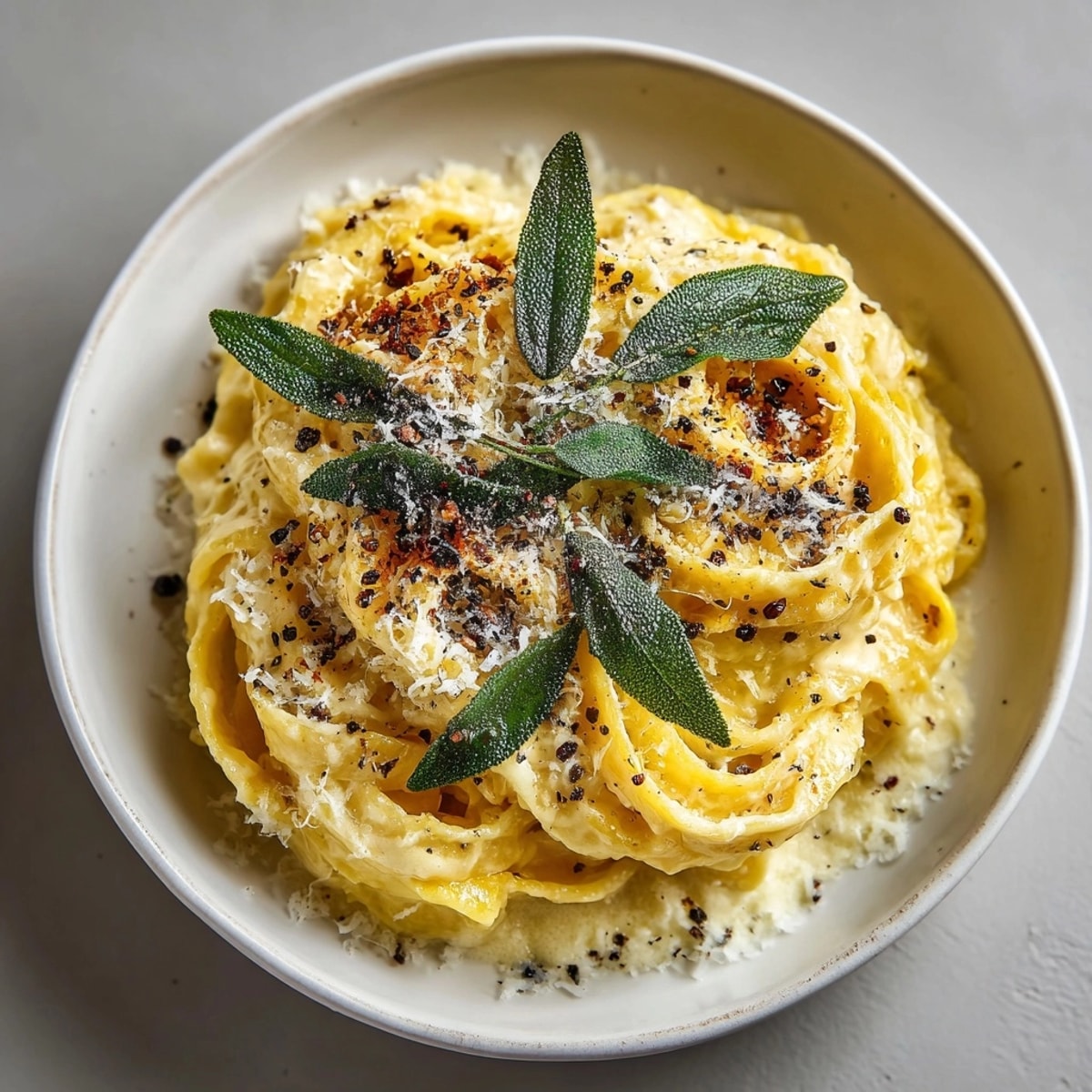 Save
Save Brown butter sage pasta brings together everything I crave in a special homemade meal. The nutty richness of browned butter clings to silky noodles while sage perfumes the dish with its earthy aroma. Topped with crisp sage glass shards, this recipe feels like something you would order at an Italian trattoria, yet it is surprisingly easy to master in your own kitchen.
The first time I tried sage glass shards was for a dinner party that needed a wow factor. Now, I make this pasta for both comfort nights and special occasions because it never fails to disappear fast.
Ingredients
- Dried fettuccine or tagliatelle: Brings the perfect chewy bite that absorbs buttery sauce well Choose Italian or bronze-cut for the best texture
- Salt: A key flavor enhancer in the pasta water Reach for sea salt if possible
- Unsalted butter: The foundation of brown butter sauce gives nuttiness and aroma Opt for European-style for richness
- Fresh sage leaves: Provides earthy herbal perfume and dramatic shards Pick firm vibrant leaves avoid any bruised spots
- Garlic: Offers subtle pungency to round out the butter and sage Use freshly minced garlic for best results
- Lemon juice: Balances the richness and lifts flavors Fresh-squeezed makes a big difference
- Freshly ground black pepper: Adds gentle heat and complexity Use a pepper mill for bright flavor
- Parmigiano-Reggiano: Signature salty savoriness helps bind the sauce Buy a wedge and grate right before serving
- Large egg white: Needed for shattering crisp sage glass shards Choose fresh eggs
- Cornstarch: Ensures the sage glass is shatteringly crisp and light
- Neutral oil: For frying the sage glass leaves Sunflower or canola will not overpower the herbs
Instructions
- Cook the Pasta:
- Bring a large pot of well-salted water to a rolling boil Use about one tablespoon of salt for every four liters of water Add dried fettuccine or tagliatelle and stir to prevent sticking Cook until just al dente according to the package instructions Reserve half a cup of pasta water and drain thoroughly
- Prepare the Sage Glass Shards:
- Pat about a dozen sage leaves absolutely dry Using a small bowl whisk one egg white vigorously until frothy but not stiff Dip each sage leaf gently into the egg white ensuring both sides are coated Shake off excess egg white and dust both sides with cornstarch Heat about one centimeter of neutral oil in a small skillet over medium-high heat When oil shimmers carefully slip in the sage leaves Fry in small batches for twenty to thirty seconds until the leaves turn crisp and glassy Use a slotted spoon to transfer them onto paper towels to drain Set aside for topping
- Make the Brown Butter Sauce:
- Melt unsalted butter in a large skillet over medium heat Add the remaining sage leaves to infuse the butter as it sizzles Swirl the pan often and watch closely as the butter foams and dark brown specks appear in about three to four minutes The aroma should be nutty not burnt Remove the sage leaves when they are crisp and set aside
- Build Flavor with Garlic and Lemon:
- Lower the heat slightly Add finely minced garlic to the skillet with browned butter Stir constantly for about thirty seconds so the garlic softens without burning Remove the pan from heat immediately then stir in a teaspoon of fresh lemon juice to brighten the flavors
- Toss Pasta and Sauce:
- Add the cooked pasta into the skillet with the brown butter Swirl gently using tongs to coat every strand If the sauce looks dry add a splash of reserved pasta water at a time until silky and glossy Sprinkle grated Parmigiano-Reggiano over the pasta along with freshly ground black pepper Toss again until well combined
- Finish and Serve:
- Twirl the pasta onto warm plates or bowls Arrange the reserved crisp brown butter sage leaves and dramatic sage glass shards on top Serve right away to preserve the texture and aroma
 Save
Save Using European-style butter was a total revelation for me the first time I made this The rich fat content really does transform both the flavor and the way the sauce coats the noodles Years later my family still talks about that first batch and how everyone wanted seconds
Storage Tips
Store leftovers in an airtight container in the refrigerator Eat within two days Reheat gently with a splash of extra water or butter over low heat so the sauce stays smooth For the sage glass prepare them just before serving as they lose crispness after a few hours
Ingredient Substitutions
Sub any wide dried noodle like pappardelle if fettuccine or tagliatelle is unavailable For a dairy free option try a quality vegan butter and plant-based parmesan If you are out of sage rosemary can stand in for a bolder earthy twist but use less as it is strong
Serving Suggestions
Serve this dish on pre-warmed shallow bowls or plates Add a fresh sprinkle of Parmigiano-Reggiano at the table For extra color a simple green salad drizzled with lemon vinaigrette pairs beautifully Pour a glass of chilled white wine like Sauvignon Blanc to round out the meal
Cultural and Historical Context
Brown butter and sage is a classic pairing in northern Italy especially with handmade gnocchi and filled pastas like ravioli Sage’s use in Italian cooking highlights its ancient role as both a culinary herb and traditional remedy This contemporary take gives the classic a little modern drama with the glass shards
Seasonal Adaptations
In spring try swapping sage for tender chive blossoms or basil In autumn reinforce the cozy flavors with toasted chopped hazelnuts or walnuts In winter a pinch of nutmeg can be stirred into the brown butter for warmth
Pro Tips
- Dry those sage leaves completely before dipping so the glass fries up crisp not soggy
- Watch the butter closely as it browns It can go from perfection to burnt in seconds Swirl and sniff
- Grate cheese fresh and toss everything when hot so the parmesan melts into the sauce for creaminess
- I learned to never rush the sage glass step If the oil is not hot enough the shards will turn out tough instead of crisp
 Save
Save Cooking Questions
- → How do I make the sage glass shards?
Coat sage leaves in whisked egg white and cornstarch, then fry quickly in hot oil until translucent and crisp. Drain on paper towels for best texture.
- → Can I use a different pasta shape?
Yes, while fettuccine or tagliatelle work well, you can substitute with other long pasta such as linguine or pappardelle for similar results.
- → Is it possible to make this dish gluten-free?
Absolutely. Simply use gluten-free pasta and check that all other ingredients, like cornstarch and cheese, are gluten-free-certified.
- → What wine pairs well with this meal?
The rich, nutty flavors pair beautifully with a crisp white wine such as Pinot Grigio or Sauvignon Blanc, complementing the herbal sage notes.
- → How can I make the sauce extra creamy?
Add a splash of heavy cream or a bit more cheese to the brown butter sauce before tossing with the pasta for luxurious creaminess.
- → Can this be prepared in advance?
The sage glass shards may be made a few hours ahead and kept crisp. Prepare the pasta and brown butter sauce fresh for best texture and flavor.